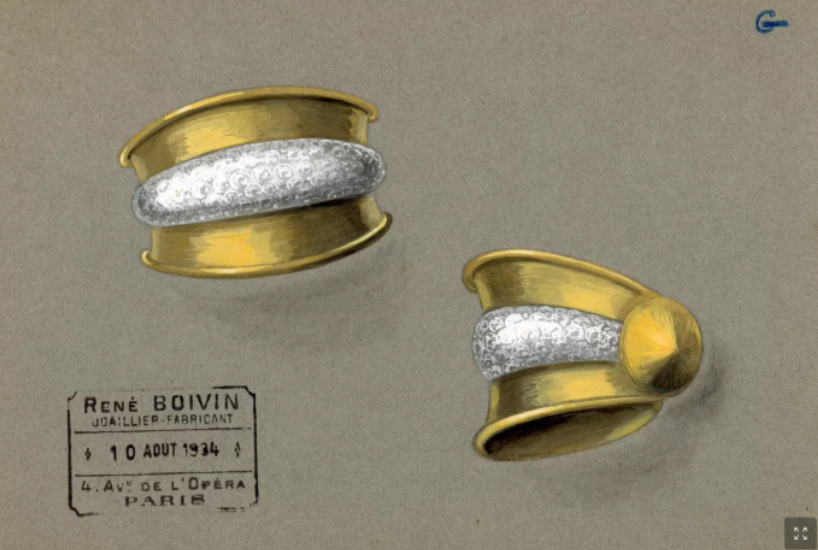Behind the scenes of the renaissance of René Boivin, the legendary jeweller of the 20th century - Article in Le Figaro
They sometimes gather in a small, anonymous office on Rue de la Paix. From the window, if one leans slightly, the storefronts of the great jewelers can be seen, with the Vendôme Column in the background. Here, historian Juliet Weir-de La Rochefoucauld and antique jewelry specialist Olivier Baroin meet with the president of the Boivin committee, Thomas Torroni-Levene. Outside of these Parisian sessions, the trio mainly works in Geneva, where their treasure trove—the archives of the René Boivin house—is located.
The name and legacy of this extraordinary 20th-century jeweler were acquired in 2019 by Torroni's grandfather. “A gemstone and antique jewelry dealer, known like a legend in the jewelry world,” explains Olivier Baroin. The previous owner, Nathalie Hocq Choay (formerly of Cartier and Poiray), had held onto the brand for about twenty years and received numerous purchase offers. Concerned about the future of this institution, she carefully chose her buyer.
While the Torronis were thrilled to win the bid, they were even more surprised to uncover archives far more extensive than expected. “There were a few pieces of jewelry, but also 25,000 drawings and studies, plaster models, maquettes, account books, stock inventories, order books, and thousands of correspondences,” lists Thomas Torroni-Levene, who works for the family trading business and has, for the past four years, been leading the Boivin “project.”

He meticulously sifts through the recovered documents, hunting for testimonies from people who had any involvement—direct or indirect (artisans, descendants, clients...)—with the brand’s leadership throughout the 20th century. Additionally, they are on the lookout for private collectors who may own Boivin pieces that could be certified and photographed for a forthcoming book, designed to be a definitive reference, currently in preparation with Juliet Weir-de La Rochefoucauld.
Until the Torronis became their custodians, these archives, for some inexplicable (or at least unexplained) reason, remained unexploited and even unknown—some experts even doubted their existence. As a result, appraisals of antique jewelry attributed to Boivin were based on “a body of clues,” as professionals put it, and on very fragmented documentation. Many rings, brooches, and bracelets—most of them unsigned—were therefore mistakenly certified, ultimately diminishing the brand’s prestige. Thus, Thomas Torroni-Levene’s first mission today is clear: “Conduct rigorous and complete appraisals, reassure the market, and restore the brand to its rightful pedestal,” he says.
Founded at the end of the 19th century by Jules-René Boivin, the house distinguished itself through its strong female leadership, standing against the male-dominated world of Place Vendôme. Jeanne Boivin, sister of Paul Poiret and the young widow of the founder, took over with remarkable skill, proving to be a savvy businesswoman and tastemaker, soon joined by her daughter Germaine. “She created, along with her designers (Suzanne Belperron in the 1930s, followed by Juliette Moutard until 1970), jewelry for women with characteristics vastly different from her competitors,” writes expert Évelyne Possémé in the catalog for the iconic 2009 exhibition Art Deco and Avant-Garde Jewelry at the Musée des Arts Décoratifs in Paris, for which she was the curator. “An admirer of Art Nouveau, she embraced the principles developed by René Lalique: architectural importance and voluminous jewelry. Geometry or industrial motifs never inspired her, though she felt closer to the modern movement than to the Place Vendôme jewelers. (...) Her bracelets and rings are massive sculptures that exist in space. Her materials, such as rock crystal or agate, are cut to perfection, without sharp edges, but with sensual and voluptuous curves.”